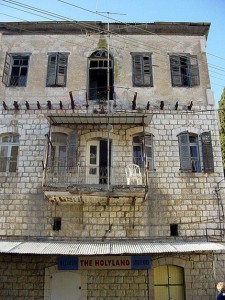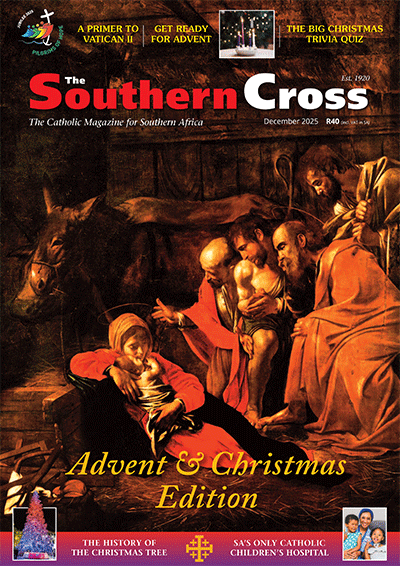1: Welcome in the Holy Land
In bygone eras, pilgrims to the Holy Land would arrive at the bustling, colourful port of Jaffa (at least if they were travelling from the West), often arriving in November to stay until after the Easter celebrations. The modern pilgrim is likely to land at the modern, airconditioned airport of Tel Aviv and stay for a week or maybe two. The only similarity is Tel Aviv�s proximity to Jaffa, and the shared impulse to walk in the footsteps of Our Lord. Our group of 45, from throughout South Africa, arrived in Tel Aviv and would stay in the Holy Land for just over a week.
The pilgrimage proper began soon after our arrival, in the old capital of Palestine at the time of Jesus and the HQ of Pontius Pilate: Caesarea. Jesus never set foot in Caesarea, though St Paul and St Peter did. Here Herod built one of his lavish palaces, and the Romans constructed what must have been an impressive city, with its marvellous aqueduct and amphitheatre, which is used even now.
Our excellent guide, Iyad Qumri, pointed out that the residential area of ancient Caesarea is still buried beneath what today is a parking area, a road, and adjacent fields. Excavations in the Holy Land continue all the time, with great, sometimes astonishing finds being made frequently. So it is easy to be cavalier about tour buses parked above doubtlessly fascinating ruins.
This alone should motivate pilgrims and tourists alike to return to the Holy Land on a regular basis. Tourists have, of course, stayed away since the second intifadah (or uprising) erupted in September 2000, sparked by the provocative appearance at the al-Aqsa mosque by Israel�s prime minister, Ariel Sharon. This undid all the impressive work the Israeli and Palestine tourist authorities had done in the preceding years to bring visitors to the land of the three monotheistic religions.
When I led a tour of 47 pilgrims to the Holy Land in May 2000, we had to jostle for position with pilgrim groups from around the world, including an unedifying set-to with a group of objectionable Italians at the altar above the putative spot of the crucifixion. A year later I brought another group, less than half the size, to the Holy Land. In most places, we were the only group there.
Things are picking up slowly as the political violence has eased, Iyad explained. Christian pilgrim groups are most welcome throughout the Holy Land � particularly by the local Christians, now a tiny minority of the population after an exodus that began with the establishment of the state of Israel in 1948 and intensified with the political strife that followed it. Iyad, a Christian, made it a point to thank us for our presence, which the Holy Land�s Christians see as a concrete sign of solidarity.
These were not just words of a generous welcome, they were heartfelt. And they confirmed a point that has been made repeatedly by the apostolic nuncio to the Holy Land, Archbishop Pietro Sambi: that in the face of international solidarity among Jews for Israeli Jews, and Muslims with Palestinians, the few Christians left in the Holy Land have “the impression of being abandoned by the rest of their brothers.”
Archbishop Sambi has also pointed out that most Christians in the Holy Land specialised in services to pilgrims � in transport (as our driver, Kamal Abu La�al), as guides (as Iyad), in hotels, restaurants and souvenir shops. The support of Christian pilgrims is crucial towards ending the exodus of Christians in the Holy Land.
And on that note, we proceeded to Nazareth, the hometown of Jesus.
- Shrines Around the World: Our Lady of Guadalupe - December 12, 2025
- The Chosen’s Mother Mary: I loved washing Jesus’ hair - December 5, 2025
- Book Review: Benedict, Baltimore and the Barbary Pirates - December 4, 2025






